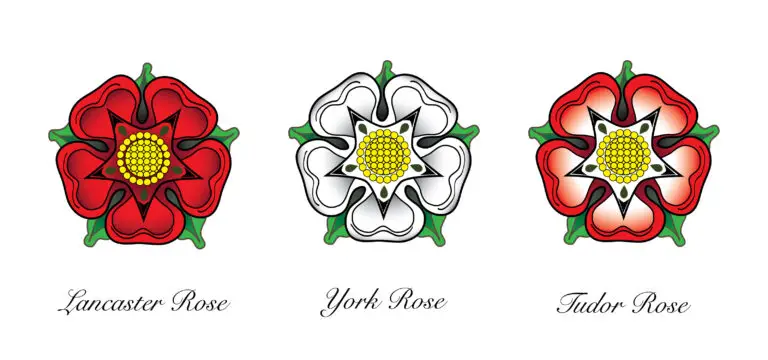War of the Roses

Table of Contents
What is War of Roses
The War of the Roses was a series of dynastic conflicts fought in England during the late 15th century, primarily between two rival branches of the royal House of Plantagenet: the House of Lancaster, represented by a red rose, and the House of York, represented by a white rose. The war was rooted in disputes over the succession to the English throne and rival claims to power among nobles.
The conflict began in 1455 when Richard, Duke of York, challenged the authority of King Henry VI, who belonged to the Lancastrian line. Over the next three decades, the two houses fought a series of battles, including the Battles of Towton, Barnet, and Tewkesbury, as well as various sieges and skirmishes. The war saw shifts in fortune for both sides, with the Yorkists eventually emerging victorious under the leadership of Edward IV, who became king in 1461.
War of Roses History
The Wars of the Roses were fought between 1455 and 1485, spanning several decades of political turmoil and military conflict in England.
The name “Wars of the Roses” comes from the symbols associated with the two rival houses: the red rose of Lancaster and the white rose of York.
The conflict was rooted in a struggle for power between two branches of the Plantagenet dynasty: the House of Lancaster, represented by King Henry VI, and the House of York, represented by Richard, Duke of York.
The wars were characterized by battles, skirmishes, political maneuvering between the Lancastrian and Yorkist factions, and shifting alliances among noble families.
Key battles of the Wars of the Roses included the Battle of Towton (1461), the Battle of Barnet (1471), and the Battle of Bosworth Field (1485), which marked the end of the wars.
The Battle of Towton, fought on March 29, 1461, was the largest and bloodiest battle of the Wars of the Roses, resulting in a decisive victory for the Yorkists and the coronation of Edward IV as king.
The Battle of Bosworth Field, fought on August 22, 1485, saw the Lancastrian forces of Henry Tudor (Henry VII) defeat the Yorkist army of Richard III, leading to the establishment of the Tudor dynasty.
The Wars of the Roses saw several changes in leadership and succession, including the deposition of Henry VI, the brief reigns of Edward IV and his brother Richard III, and the ascension of Henry VII.
The wars were marked by political intrigue, betrayal, and acts of treachery, including the execution of nobles and rival claimants to the throne.
The Wars of the Roses had significant social and economic consequences, including the loss of life, the displacement of families, and the erosion of noble power.
Related Links
Glorious Revolution
Hundred Years’ War
Seven Years War
Tudor Dynasty